You may have heard the phrase female gaze being tossed around more and more, but what is it? The more I read about it, the less I seem to know. It has been stated that the problem with describing the female gaze is that it’s often “defined by what it doesn’t show, what it refuses to linger on” and I think that moves us a bit closer to an understanding. Within the patriarchal tradition of art history “men act and women appear. Men look at women. Women watch themselves being looked at. This determines not only the relations between men and women, but also the relation of women to themselves. The surveyor of women in herself is male: the surveyed the female. Thus she turns herself into an object…(Berger*).” This is the male gaze that Laura Mulvey references in her iconic essay Visual Pleasure and Narrative Cinema in 1975. We passively consume images and their messages more than any generation in history, which means we are constantly inundated with this gendered viewpoint. We praise and celebrate the rare images that surprise us as a culture, but they are not the norm, and the average person isn’t seeing images outside of mainstream media unless they have sought them out. The question of whose gaze, is a question of value. Whose interpretation of the world do we consume?
I postulate that the real power in the female gaze is women making art with the female viewer in mind. Art made, not to consider the male ego or male desire, but a female viewer, her desire.
Historically, it’s been extremely limited and biased by gender, race and class. Faced with visual inundation of a limited narrative, it shouldn’t come as a great surprise that more and more we want to break free of a cis white male vision of the world. I postulate that the real power in the female gaze is women making art with the female viewer in mind. Art made, not to consider the male ego or male desire, but a female viewer, her desire.
“There is no way in which we can produce an alternative out of the blue, but we can begin to make a break by examining patriarchy with the tools it provides (Mulvey*).” And that is where I find this idea of the female gaze peeking its head into the art world. Still bound by the restrictions of a patriarchal language, but desiring to see ourselves reflected in the culture and art around us we struggle to use the tools of oppression in a newly expressive way.
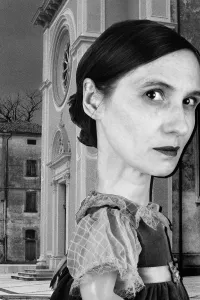
The power of the female gaze isn’t in its relation to or rejection of the male gaze, but in what it is adding to the visual language.
Perhaps even more problematic is trying to assert the value of that voice while still forced to exist and thrive when judged against that ingrained and gender biased rubric of success. The power of the female gaze isn’t in its relation to or rejection of the male gaze, but in what it is adding to the visual language, reinterpreting old tropes and broadening the scope of what we see as a culture on a daily basis. As Mulvey added in her critique, “If there is any validity to a feminist aesthetic, it lies in its capacity to overturn dominant ways of seeing […]”. In an attempt to demystify the not-as-elusive as packaged female gaze I will be exploring photographers that strike me as exciting in how they use the camera to talk to themselves and other women.
Tonje Bøe Birkeland, the internationally shown Norwegian photographer, feels like a fitting artist to start with as we venture into the supposedly unknown and foggy waters of the female gaze. Her work, The Characters, “aims to create a position for women within the natural landscape and considers women's position in the history of exploration.” One of the first things that struck me about Birkelands images were the relation of the female protagonists to the seemingly boundless landscapes around her.
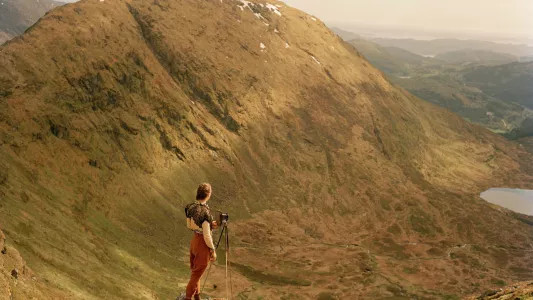
Birkeland, without exception, hunts out imposing landscapes and yet the viewer can not escape the presence of her characters within it, working in harmony with the challenges of their environment. Each character standing strong, erect and unflinching in reflection of the often mountainous landscapes unfolding around her. Each character is developed throughout their individual series as lone explorers driven by unique pursuits, curiosities and lusts for adventure. It took me a while to scratch out why I was in love with and drawn to these characters, and much of it lies in their gaze and stance. Almost always in a state of discovery. Even when looking directly into the lens, it's as if we’ve caught them while panning the landscape for nuggets of intrigue.
© Tonje Boe Birkeland, Character #V, #I
Their indifference leaves us voyeurs on their journey. Birkeland rejects the common patterns of gendered posing for women that generally display as withdrawn, childlike, reserved, submissive, subordinate and/or some combination. This is often achieved by head and body canting (submissive tilting) and looking away from or past the camera or objects in the frame. Birkeland avoids these gendered poses, allowing the character to embody the traits she has projected on them, therefore creating a visually pleasing, exciting and immersive body of work that gives a fresh voice to the bold women who went before us and live within us.
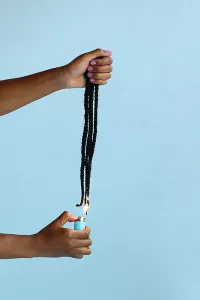
Nakeya Brown, an American Photographer whose work “responds directly to our hair politics and addresses the levels of visibility and erasure, isolation and shared experience, self-care and harm it brings through girlhood and womanhood (Brown*)”. In many ways, Brown’s work is a call to arms for other feminists to be more inclusive and turn the volume up for voices not traditionally given space within the movement. Hair politics has been in U.S. news lately with only 3 out of 50 states finally passing laws protecting against natural hair discrimination. A form of discrimination many white Americans don’t even realize exists. Brown’s series, The Refutation of “Good” Hair, “explicitly displays the texture enigmas introduced by using Anglo-Saxon standards as a yardstick for femininity and beauty.”
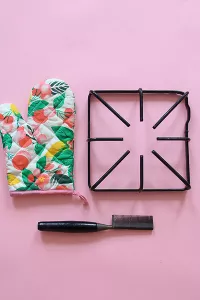
The images depict black women ingesting hair. The message to conform literally being forced down their throats. In Hair Stories Untold she explores the relationship between self care and physical pain. “This pain is mostly endured in the privacy of our kitchens, bathrooms, living rooms, and salons. It’s an invisible but shared experience amongst us. This body of work embodies the invisibility of that pain and also reveals how within our upbringings we practiced self-grooming one and the same, irrespective of age.” The images highlight beauty tools and processes that made an impact on her journey from girlhood to womanhood. Arguably, Browns artistic practice could be characterized as an ongoing conversation with other women about black womanhood, experience under a racist patriarchy and the need for increased awareness of non-white voices in feminism. As Brown states, “Within my work, the photograph creates a space to reflect on how hair rituals and beliefs within black girlhood and womanhood overlap, crisscross, and intersect. Our stories converge so much that they form a delicate knot loaded with personal meanings, entrenched in a collective identity.”
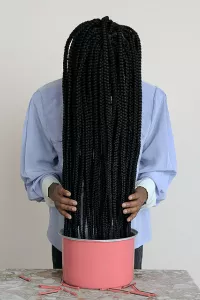
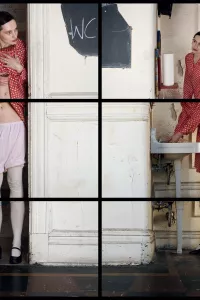
Cornelia Hediger, a Swiss artist living and working in New York, has a carefully honed ability to play with composition, scale and subject relations. I was introduced to Hediger’s work in art school and felt a deep connection to the women in her images. There is something about how wrong they are that feels right. In Doppelganger, for instance, images are broken up into 6 disjointed frames within one frame where she forces the eye to accept a false reality. The figures are distorted with some body parts becoming out of proportion, alongside themes of violence, sexuality and suspense. We aren’t permitted to see them with perfect clarity and are left instead with a haunting sense of danger or intrigue or titillation.
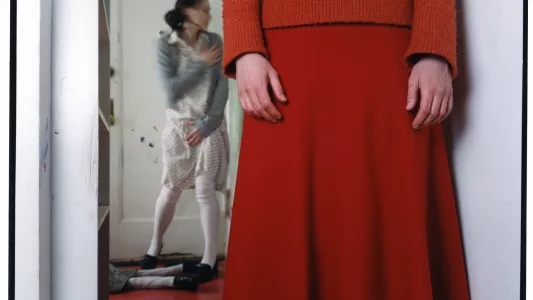
In The Future is Canceled she creates a similar effect with perspective. Often shooting from dramatically high or low angles, almost as if we are looking through the eyes of the subject in a novel and uncomfortable way. Some feel as if you are a small child looking around and not quite understanding what you are seeing. Others as if you are the subject in a private, random moment. Hediger’s work as a whole feels like a dark, elusive and surreal fairy tale. Stretched bodies, confrontational gazes, investigative perspectives, sexualy explorative narratives, psychological deconstructions, and conspiratorial characters all come together to create a bizarre and novel experience. There is a boldness in her rejection of expectation and a general sense of indifference for traditional photographic expectations while maintaining photographic integrity of the medium. Her work as a whole could be seen as the protagonist watching her own awakening, studying her own development.
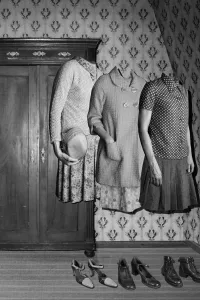
Hediger’s images show a depth and honesty of feminine character that can’t exist within the male gaze. There is no mystique of the siren, or coy flirtation in her images. The dialogue within the image is often woman to woman, self to self. There is a woman, confronting her existence, her understanding without signs of viewer awareness. Her most recent body of work, Into the Vortex, “is a series of handmade photomontages that explores a parallel world where the laws of gravity, linear perspective, and the expected relationships between foreground and background do not exist, as we know them. The montages explore a whimsical world where focal planes are shifting and tilting, where characters, at times, are blown out of proportion and dwarf the landscapes around them…[it] explores a different view of the world, one that is irrational, nonsensical and distorted, and one that perhaps thereby launches an alternative perspective.” An alternative perspective is just what we need and what many of us are searching for.
I would like to believe that photography and the art world in general would be a natural place for this dominant male gaze to be regularly challenged, but we know that not to be true. Equal Lens recently looked at 70 leading commercial photography agents and found that women accounted for less than 25% of those represented. This is a reminder that although you may feel like you are hearing about the female gaze everywhere, you are not really seeing it reflected in most of the images you consume. The increasing awareness of the female gaze in photography is a huge step in bringing women as multifaceted creators and collaborators, not just general tools of male desire. But, until we start hiring women to shoot and produce more images in mainstream culture, the female gaze will remain novel and “elusive”.
*Berger, John. (1977). Ways of Seeing. Print. **Mulvey, L. (1975). Visual Pleasure and Narrative Cinema. Screen, 16(3), pp.6-18. ***Brown, Nakeya. (2017). A Delicate Knot: Photographing Black Girlhood and Womanhood in 2017. Journal of Feminist Scholarship, Spring, 2017.






